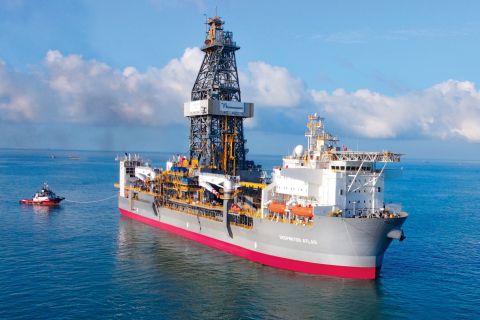Presented by:

This article appears in the E&P newsletter. Subscribe to the E&P newsletter here.
Since their collapse in 2014, oil prices are again rising for the first time. Driven by supply shortages from reduced investment, a declining number of wells and growing demand, operators worldwide face an opportunity to increase production to capitalize on the oil price super cycle. But how can operators make the most of this opportunity without drilling new wells?
On a global level, average oil recovery is only about 30%, meaning that most existing wells still have nearly 70% of proven reserves in the ground by the time a well is shut in or abandoned due to production decline. With recent advances in well diagnostics, customized chemistry and intervention services, these remaining assets can be brought online for an additional production life in a far more economical manner than ever before.
Water is among the most prevalent factors responsible for the termination of many wells before their prime and accounts for nearly 75% of production from all oil and gas wells worldwide. Addressing this underlying issue at its source can profoundly impact well performance and help curtail other impairments, such as formation damage, precipitation of scales and organic deposits, fines migration, and solids production, which may also be remedied directly.
In understanding the nature of these challenges, opportunities can be found to access these remaining reserves. Halliburton provides operators with solutions to impact production on their existing assets immediately.
Reducing unwanted fluid production
Unwanted fluid production detrimentally affects asset profitability by limiting hydrocarbon production while directly impacting the cost of lifting, surface treatment and water disposal.
Among the most straightforward solutions is applying a relative permeability modifier (RPM) that selectively reduces permeability to water without impairing the flow of hydrocarbons (oil or gas), capable of significantly decreasing formation water production. Because of the selectivity of the RPM, the treatment can be bullheaded into the well bore, with no need for mechanical isolation. This system applies to oil and gas production wells and water injection wells to help improve injection profiles.
Halliburton's WaterWeb service is highly suitable for a broad range of completion types, including cased and perforated, open hole, slotted liners and gravel packs. Additionally, we recently modified its chemistry so it is applicable in sandstone and carbonate reservoirs, giving operators much more flexibility in the design and execution. RPMs are an easy solution to implement with minimal logistics, immediately improving production while reducing surface water treatment constraints.
With water production controlled, hydrocarbon production can be further improved by addressing near well bore (NWB) damage, removing organic and inorganic deposits, revitalizing existing zones, or stimulating previously bypassed pay.
Removing damaging scales
Scale detrimentally affects asset profitability by decreasing or stopping hydrocarbon production, causing premature equipment failure and increasing operating expenses. There are a lot of solutions that claim to remove scales, but these are very often corrosive for the well completion and have limited dissolving power. With this challenge in mind, Halliburton released HalKleen scale removal services last year, including a suite of customized chemistries to remove the most common types of scales found in the oil and gas industry, including calcium carbonate, barium sulfate, strontium sulfate and iron sulfide, among others. This service provides non-corrosive, elastomer friendly, fast-acting treatments to remove scale from tubing, perforations and downhole equipment in the well bore. These blends help operators maximize well performance, limit the shut-in time for maintenance and do not compromise well integrity.
While addressing impairments in the reservoir will undoubtedly impact improving well performance, operators can take additional steps to truly optimize production and unlock these remaining reserves.
Maximizing reservoir contact and production through acidizing
Acid stimulation of carbonate reservoirs can immediately impact the profitability of assets. However, HCl-based acid stimulation treatments in calcite-rich reservoirs become more challenging when dealing with high-temperature or long intervals.
A new acid stimulation technology enhances effectiveness by chemically retarding the reactivity of HCl. Based on a low-viscosity, polymer-free acid system, Halliburton’s XTend service enables deeper penetration of live acid into the formation by binding it to the carbonate surface, minimizing NWB facial dissolution. In addition to the delayed acid reaction properties, this fluid system provides in-situ scale inhibition properties once the well is brought into production. This feature reduces the need for additional well interventions to remove damaging scale issues from the NWB region, perforations or downhole equipment.
Customizing the right solution
Just as an extensive array of production issues may present themselves in existing assets, Halliburton offers a broad range of intervention chemistries and services to unlock the full potential of reserves. Through advanced diagnostics, laboratory services and a collaborative approach to asset optimization, the service company can help diagnose the specific issues limiting production, design an optimal solution and deliver the intervention a well needs to make the most of existing assets. So if you have an inventory of underperforming wells, there are rapid solutions available that can quickly impact profitability. Why not unleash reservoir performance with custom chemistry in place of drilling new wells?
Recommended Reading
Deepwater Roundup 2024: Offshore Africa
2024-04-02 - Offshore Africa, new projects are progressing, with a number of high-reserve offshore developments being planned in countries not typically known for deepwater activity, such as Phase 2 of the Baleine project on the Ivory Coast.
Rystad: More Deepwater Wells to be Drilled in 2024
2024-02-29 - Upstream majors dive into deeper and frontier waters while exploration budgets for 2024 remain flat.
TotalEnergies Starts Production at Akpo West Offshore Nigeria
2024-02-07 - Subsea tieback expected to add 14,000 bbl/d of condensate by mid-year, and up to 4 MMcm/d of gas by 2028.
Well Logging Could Get a Makeover
2024-02-27 - Aramco’s KASHF robot, expected to deploy in 2025, will be able to operate in both vertical and horizontal segments of wellbores.
Shell Brings Deepwater Rydberg Subsea Tieback Onstream
2024-02-23 - The two-well Gulf of Mexico development will send 16,000 boe/d at peak rates to the Appomattox production semisubmersible.





